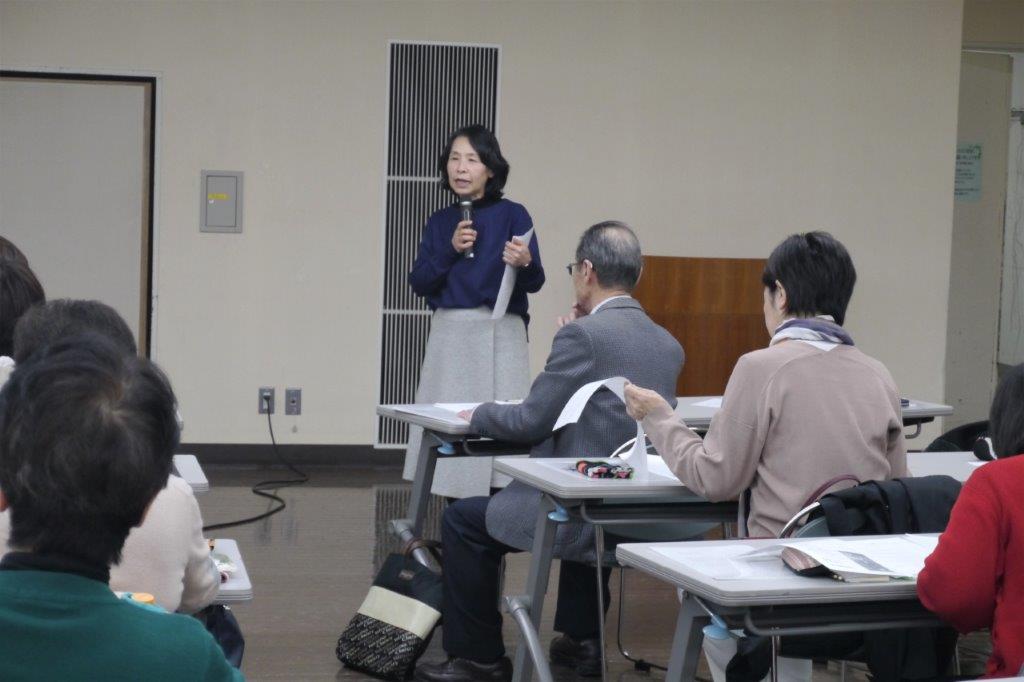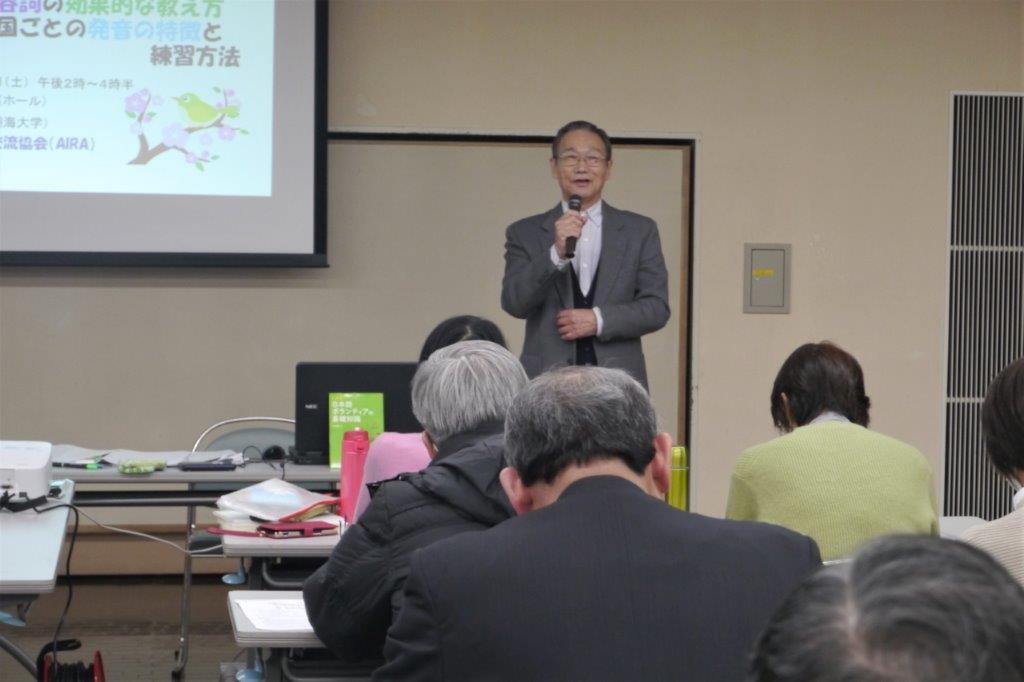 AIRA offers Japanese classes for people from other countries. A lecture was held for volunteer teachers who teach in Abiko and in neighboring cities. (No. 19-28)
AIRA offers Japanese classes for people from other countries. A lecture was held for volunteer teachers who teach in Abiko and in neighboring cities. (No. 19-28)Date and Time: Saturday, February 22, 2020 2:00 p.m. ~ 4:30 p.m.
Venue: Multi-Purpose Hall, Abiko Shimin Plaza
Lecturer: Ms.Nobumi Nakai, Associate Professor of School of Hospitality and Tourism Management, Meikai University
Attendants: Thirty-three people (22 from AIRA, 4 from Toride, 4 from Kashiwa, 2 from Tsukubamirai and 1 from Moriya)
Venue: Multi-Purpose Hall, Abiko Shimin Plaza
Lecturer: Ms.Nobumi Nakai, Associate Professor of School of Hospitality and Tourism Management, Meikai University
Attendants: Thirty-three people (22 from AIRA, 4 from Toride, 4 from Kashiwa, 2 from Tsukubamirai and 1 from Moriya)
With the increase of foreign people living and working in Japan,there is an increasing demand for Japanese education and
teachers are trying to improve their teaching skills.
teachers are trying to improve their teaching skills.
On this day AIRA held a lecture inviting Ms.Nobumi Nakai as the instructor. Ms.Nakai is an expert in linguistics and supports
Japanese education through lectures for volunteers.
Japanese education through lectures for volunteers.
The lecture was emceed by Ms. Aburano and started after greetings by Mr. Hesaki and Mr. Yamazaki representing AIRA.
Ms. Nakai explained techniques in teaching adjectives, “joshi” (postpositional particles) and pronunciation.
1. Adjectives
A lot of students make mistakes in making negative forms.
Explain the rules of inflection by writing them on the board.
Examples:
The negative form of “samui” (cold) is not “samuInai” but “samuKUnai”. You erase “i” and put “ku” instead.
And the negative form of “nigiyakana mise”(busy/noisy/lively shop) is not “nigiyakaNA dewanai mise” but “nigiyaka dewanai mise”. Here “na” has disappeared!
A lot of students make mistakes in making negative forms.
Explain the rules of inflection by writing them on the board.
Examples:
The negative form of “samui” (cold) is not “samuInai” but “samuKUnai”. You erase “i” and put “ku” instead.
And the negative form of “nigiyakana mise”(busy/noisy/lively shop) is not “nigiyakaNA dewanai mise” but “nigiyaka dewanai mise”. Here “na” has disappeared!
2. Postpositional Particles
Let students think about and “savor” the differences between similar particles such as “wa”and “ga”, “ni” and “to”, “ni” and “de”, “e”and “ni”, etc. by showing example sentences.
Let students think about and “savor” the differences between similar particles such as “wa”and “ga”, “ni” and “to”, “ni” and “de”, “e”and “ni”, etc. by showing example sentences.
3. Pronunciation
Teachers should try to be aware of proper pronunciation whenever they speak in front of students.
Some students don’t pronounce rightly influenced by the pronunciation of their native languages. Make them pronounce
repeatedly until they realize the differences.
Visual methods are also effective.
Teachers should try to be aware of proper pronunciation whenever they speak in front of students.
Some students don’t pronounce rightly influenced by the pronunciation of their native languages. Make them pronounce
repeatedly until they realize the differences.
Visual methods are also effective.
After the lecture a few questions were asked by the attendants and Ms. Nakai answered giving examples.
Finally she mentioned what volunteers should always keep in mind telling her own experiences.
“Don’t answer questions hastily if you are not sure.” “It’s not easy to correct later what students misunderstood in the first lesson.”
“Don’t answer questions hastily if you are not sure.” “It’s not easy to correct later what students misunderstood in the first lesson.”
It was an inspiring lecture which gave a good opportunity to the attendants to review Japanese language that they unconsciously use.
(Translated by Chizu Yamaguchi)





